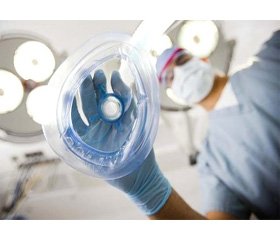Журнал «Медицина неотложных состояний» 6 (61) 2014
Вернуться к номеру
Inotropes and vasopressors in practise of anesthesiologist
Авторы: Harbar M. - Lviv national medical university named after DanyloHalytsky
Рубрики: Медицина неотложных состояний
Разделы: Клинические исследования
Версия для печати
cAMP-dependent, cAMF-independent inotropes, classification, mechanism of action, application.
Summary. Introduction. Cardiotonic and vasopressor agents have a leading role among the drugs that are used for the treatment of acute heart failure and hypotension in the perioperative period and intensive care treatment. The range of vasopressors is wide and includes drugs with different mechanisms of action. But the most difficult forclassification, understanding of mechanisms of action,includingdose-dependent activity, are agonists of adrenoceptors.
Methods. The paper is review the current data of inotropes administration in the clinical practice: the mechanisms of action, the advantages and disadvantages of this group of drugs.
Results. Classification of inotropes is difficult. They are divided into two main groups - the cAMP-dependent and cAMP-independent. The first group includes three subgroups: agonists of adrenergic and dopaminergic receptors, phosphodiesterase inhibitors, glucagon. Among the cAMP-independent four subgroups is distinguished: calcium, digoxin, triiodothyronine, levosymendan.
The bulk of the article is devoted to the adrenomimetics, the most widely used inotropes. Highlighted the presence their dose-dependent effect. Expressionof reactions to the management of the drug in given dose is determined by many factors and can vary depending on different clinical factors (tissue perfusion, the density of receptors, receptor sensitivity, acidosis, hypoxia, drugs interactions). Therefore, it is important to monitor invasive and noninvasive hemodynamic parameters.
Orally they are rapidly conjugated and oxidized in the mucosa of the gastrointestinal tract. When administered subcutaneously and intramuscular rate of absorption depends on the expression of vasoconstrictive properties that slow down the indicated process.Intravenously they are metabolized by enzymes — monoamine oxidase (except isoproterenol) and catechol-O-methyl transferase that are in different concentration in liver, kidneys, lungs and plasma. High activity of enzymes determines the short duration of action of drugs of this group. Metabolites do not possess pharmacological activity, with the exception of metabolites of epinephrine (they has β-adrenolitic activity), which leads to rapid development of tachyphylaxis. Β-agonists in therapeutic doses virtually no pass through blood-brain barrier and does not cause central effects. Only a small amount of injected β-agonists excreted from the urine in unchanged form.
Among the inhibitors of phosphodiesterase is described inamrynon and milrynon. Also, attention is given to glucagon, which according to modern guidelines can be used in the treatment of anaphylactic shock in situation of inefficiency of adrenaline.
The paper also describes inotropes which are cAMP-independent — calcium, digoxin, and levosymendan. The attention is paid to the fact that nowadays digoxin is not recommended for treatment of acute heart failure, but only for the treatment of chronic congestive heart failure.
Conclusions.In the arsenal of the anesthetist is available a wide range of medications for the correction of hemodynamic and perfusion. They have variable mechanisms of action and often characterized by specific nuances that can be useful in a variety of clinical situations. The principal purpose of management of inotropic and vasoactive drugs is to improve the balance between oxygen supply to organs and needs for oxygen. It is mistakenly to think that inotropes and vasopressors are used to increase blood pressure. In each clinical situation anesthesiologist must determine which mechanism is dominant in violation of hemodynamics: a deficit of myocardial contractility, changes in vascular tone, or hypo- or hypervolemia, and based on that choose inotropes or vasopressors in the appropriate dose.

